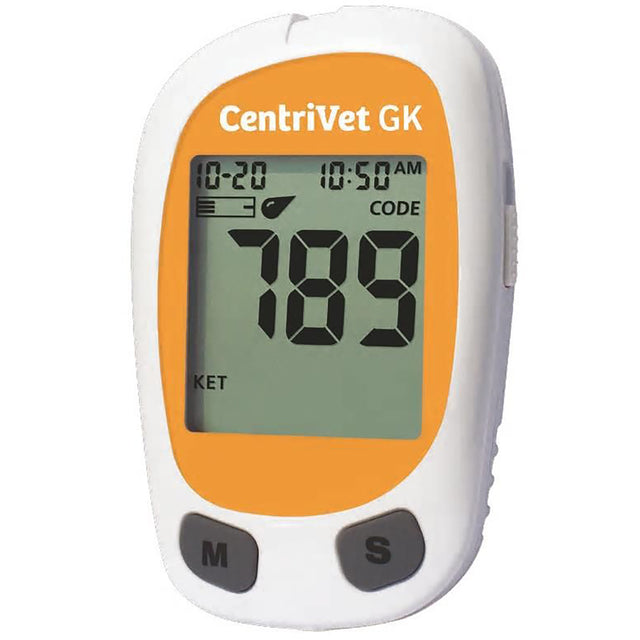CentriVet Glucose & Ketose Tester Digital
Price (excluding VAT)
Description
Description
CentriVet Glucose & Ketose Tester Digital
CentriVet blood glucose and ketose tester is a dual glucose and ketosis meter, specially developed for animals. Unique technology ensures you get accurate results for each animal in seconds.
- Small amount of blood required 0.8 µL and 1.2 µL for glucose and ketones.
- 5 seconds for glucose results and 10 seconds for ketone results.
- Clinically proven accuracy
- Audible fill detection reduces lost test strips
Supplied without test strips 903081
Why test? Ketosis (drawn milk fever) is a metabolic disease. One in nine Dutch dairy cows suffer from ketosis in the first months after calving, but there are large differences in the percentage of cows with ketosis per farm. The disease mainly occurs at the beginning of lactation due to a negative energy balance. Cause Ketosis occurs because cows consume too little feed immediately after calving compared to the amount of milk produced, in other words: energy intake lags behind at the energy requirement. To cover this deficit, the cow breaks down its own body fat, a process in which ketones are formed. The body can process small amounts of these waste products, but... at In extreme energy shortages, this is no longer possible and ketosis occurs. Symptoms Cows with ketosis become sluggish, have little appetite, do not consume enough concentrates, produce less milk, have stiff manure and their condition rapidly declines. The exhaled air of cows in ketosis smells like acetone (one of the ketones). Ketosis is often the result of another problem, for example mastitis, uterine inflammation, abomasum displacement, but also a claw disorder. These conditions negatively affect feed intake, causing cows to quickly develop a negative energy balance. source: www.veearts.nl
Interpretation of the test:
- 0 - 1.4 mmol Normal value for a fresh cow
- 1.4 - 3.0 mmol Ketosis
- 3.0 - 6.5 mmol Severe ketosis
- 6.5 mmol Very severe ketosis
- 8.0 mmol Poor prognosis
Technical Support
Technical Support
at HappyFarmer we are ready to provide expert technical assistance for all your questions. Please contact contact and experience our personal service. We are happy to help you!
Secure online payments
Secure online payments
Enjoy the convenience and security of paying with trusted methods such as iDeal, Creditcard, Bancontact, Apple Pay and Google Pay. Join us at the thousands of satisfied customers who have already paid quickly and safely!
Fast shipping
Fast shipping
Join Us at our satisfied customers and enjoy the convenience of our fast courier service: within a few days you will have your product at home, just like many other happy farmers who opted for efficiency!
-
BrandCentriVet
-
Item code
Safe & Trusted Ordering
Payment Methods
Your payment information is processed securely. We do not store any credit card or bank details and have no access to your credit card or bank details.






